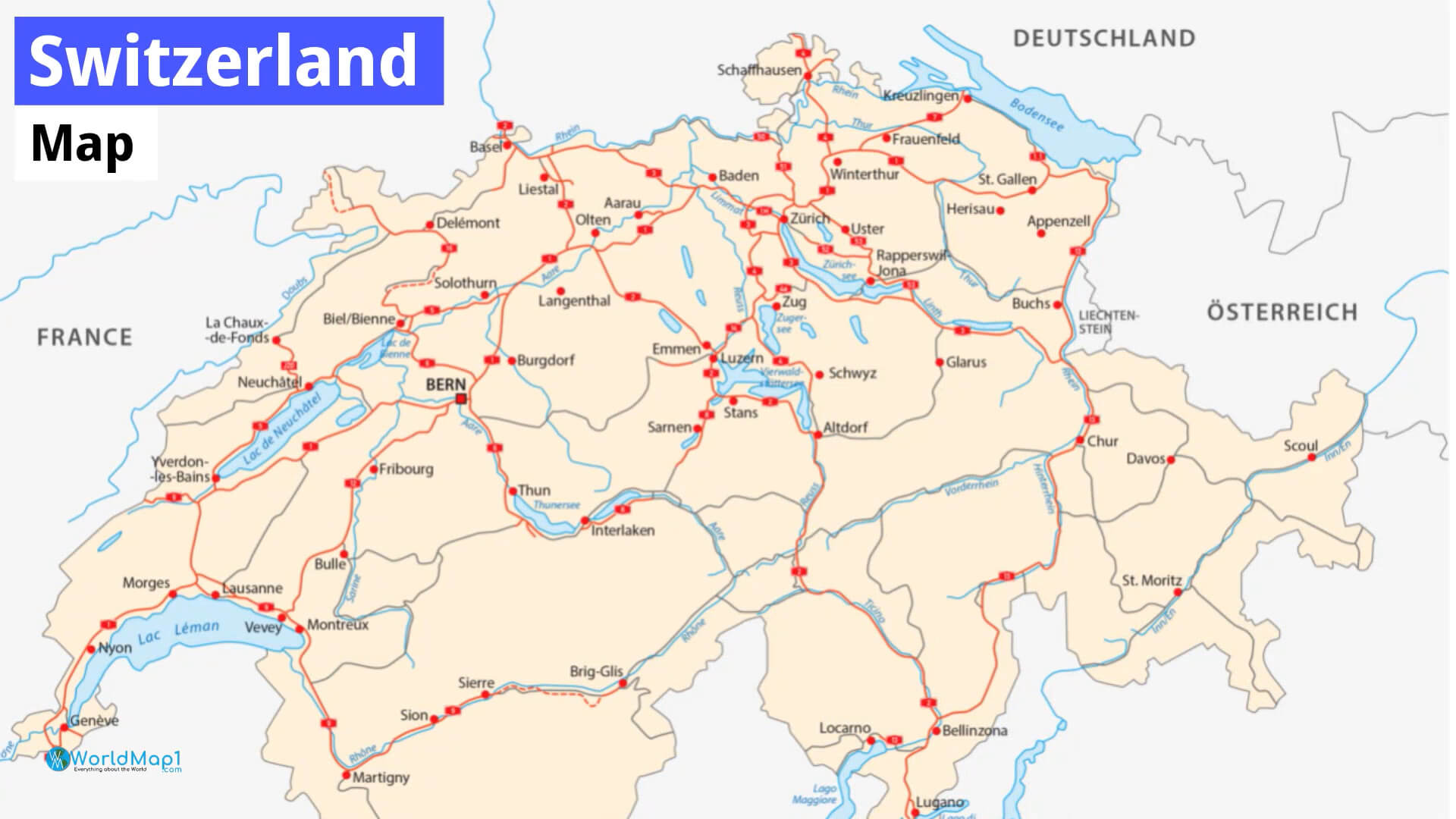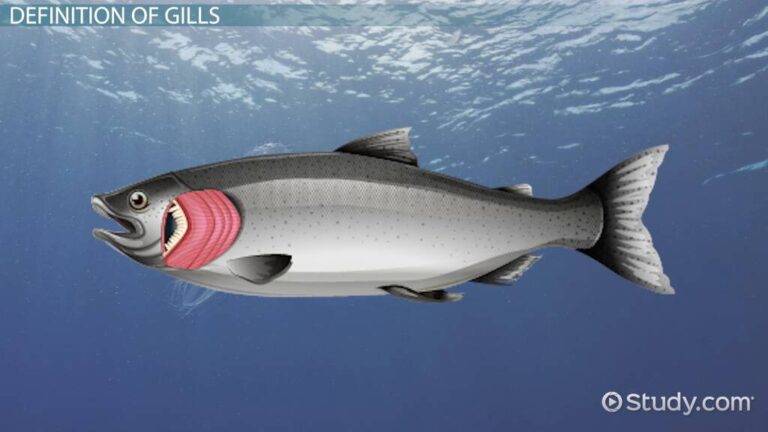Switzerland Car Brands: A Deep Dive into Precision, Niche, and Innovation
Switzerland Car Brands: A Deep Dive into Precision, Niche, and Innovation cars.truckstrend.com
Switzerland, a nation globally celebrated for its unparalleled precision engineering, luxury timepieces, and stunning Alpine landscapes, often surprises those who inquire about its automotive industry. Unlike its larger European neighbors such as Germany, France, or Italy, Switzerland is not home to mass-market car brands producing millions of vehicles annually. Instead, the narrative of "Switzerland Car Brands" is a unique story of bespoke craftsmanship, cutting-edge design, specialized engineering, and a focus on niche, high-value segments. This article will delve into the distinctive contributions of Switzerland to the automotive world, exploring its historical ventures, contemporary innovators, and the underlying ethos of quality and exclusivity that defines its presence in this global industry.
The Swiss Automotive Landscape: A Unique Approach to Mobility
Switzerland Car Brands: A Deep Dive into Precision, Niche, and Innovation
The Swiss automotive industry is characterized not by vast factories and assembly lines, but by specialized workshops, design studios, and world-leading component manufacturers. The country’s economic structure, high labor costs, and focus on high-tech, high-value-added sectors naturally steer its automotive aspirations towards precision, innovation, and luxury rather than volume production. This results in a landscape where "Switzerland Car Brands" often refer to ultra-exclusive models, concept vehicles pushing the boundaries of design and technology, or highly specialized tuning houses that elevate existing premium vehicles to bespoke masterpieces. It’s a reflection of the Swiss national character: meticulous attention to detail, uncompromising quality, and a preference for bespoke excellence over mass appeal.
Historical Glimpses: Early Swiss Automotive Endeavors
While modern Switzerland doesn’t boast household car brands, its automotive history is dotted with fascinating, albeit often short-lived, ventures. These early attempts laid the groundwork for the country’s reputation in precision engineering.
-
Monteverdi: Perhaps the most renowned Swiss car manufacturer, Monteverdi operated from 1967 to 1984, founded by Peter Monteverdi. Based in Basel, the company produced high-performance luxury cars, often combining robust American V8 engines with elegant Italian coachwork and Swiss attention to detail. Models like the High Speed 375 series and the Safari SUV were epitomes of exclusivity and luxury, catering to a discerning clientele. Monteverdi vehicles were known for their power, comfort, and unique blend of European sophistication with American muscle.

Sbarro: Frank Sbarro, an Italian-Swiss designer and engineer, established his company in 1971, focusing on creating unique concept cars, replicas, and bespoke vehicles. Sbarro is less of a traditional car brand and more of a design and engineering studio, renowned for its innovative and often radical prototypes showcased at international motor shows. The company also runs a prestigious automotive design school, Espace Sbarro, in France, influencing generations of car designers and engineers. Sbarro’s creations are testaments to pushing design boundaries and exploring unconventional solutions.
-
Other Early Attempts: Before these, smaller workshops and individuals tried their hand at car manufacturing, like the Martini (not the racing team) and Turicum, but these efforts remained largely localized and limited in production, further solidifying the trend of niche production over mass manufacturing in Switzerland.

These historical examples highlight a consistent theme: Swiss automotive ventures prioritize quality, individuality, and often extreme performance or luxury, rather than competing with large-scale producers on volume or price.
Contemporary Niche Manufacturers and Design Powerhouses
Today, the spirit of Swiss automotive innovation thrives in specialized niches, concept development, and high-end tuning.
-
Rinspeed: Founded by Frank M. Rinderknecht, Rinspeed AG is a prominent Swiss think tank and concept car manufacturer. Rinspeed vehicles are not for sale; instead, they serve as mobile laboratories, showcasing groundbreaking technologies, design concepts, and innovative mobility solutions. Each year, Rinspeed unveils a new concept car, often with unconventional features like autonomous driving capabilities, advanced connectivity, or unique material applications. Their focus is on inspiring the industry and exploring future possibilities, making them a significant "brand" in automotive innovation.
-
Piccard Performance (formerly Pic-Car): Founded by Louis Piccard, this company specializes in high-performance tuning and bespoke modifications of luxury cars, particularly Porsches. While not manufacturing entire vehicles from scratch, Piccard Performance transforms existing premium cars into unique, high-performance machines, demonstrating Swiss precision in enhancing automotive excellence.
-
Koenigsegg’s Swiss Connections: While Koenigsegg is a Swedish hypercar manufacturer, it has strong Swiss ties, particularly through its early investors and key component suppliers. This underscores how Switzerland contributes to the upper echelons of the global automotive industry, even if not through directly branded Swiss cars.

These contemporary players continue the Swiss tradition of focusing on exclusivity, cutting-edge technology, and pushing the boundaries of what’s possible in automotive design and engineering.
Swiss Excellence in Automotive Components and Engineering
Perhaps the most significant, yet often overlooked, contribution of Switzerland to the global automotive industry lies in its unparalleled excellence in precision components, advanced materials, and sophisticated engineering services. Many leading automotive brands worldwide rely on Swiss suppliers for critical parts and technologies.
-
Precision Machining and Components: Swiss companies are world leaders in precision machining, producing intricate gears, sensors, connectors, and other vital components for engines, transmissions, and electronic systems. This expertise, honed over centuries in watchmaking and precision instrumentation, translates directly into high-quality, reliable automotive parts.
-
Luxury Interiors and Materials: Given Switzerland’s reputation for luxury, it’s no surprise that Swiss firms contribute significantly to high-end automotive interiors. This includes specialized leather processing, bespoke trim elements, and the integration of fine materials. The Swiss knack for integrating high-precision mechanics (like watch movements) into car dashboards also adds a unique touch of luxury and craftsmanship.
-
Advanced Electronics and Software: Swiss companies are at the forefront of developing sophisticated automotive electronics, sensors for autonomous driving, and specialized software for vehicle control systems and infotainment. Their focus on reliability, accuracy, and innovation makes them indispensable partners for global car manufacturers.
-
Research and Development: Swiss universities and research institutions are key players in automotive R&D, particularly in areas like lightweight materials, battery technology, and sustainable mobility solutions. Their contributions often form the backbone of innovations that eventually appear in vehicles worldwide.
This behind-the-scenes contribution is where "Switzerland Car Brands" truly shine, not as finished vehicles, but as the DNA of quality, precision, and innovation embedded within the world’s most advanced automobiles.
The Future of Swiss Automotive Innovation
Looking ahead, Switzerland is poised to continue its unique role in the automotive sector, focusing on areas where its strengths in precision, high-tech, and sustainability converge.
- Electric Mobility Components: As the world shifts towards electric vehicles, Swiss expertise in battery management systems, power electronics, and high-precision electric motor components will become even more critical.
- Autonomous Driving Technologies: The development of highly accurate sensors, advanced mapping systems, and AI algorithms for autonomous vehicles presents a significant opportunity for Swiss technology companies.
- Sustainable and Smart Mobility Solutions: Switzerland’s commitment to environmental stewardship and smart city initiatives positions it well to lead in developing integrated mobility solutions, including specialized electric vehicles for urban environments or innovative public transport systems.
The future of "Switzerland Car Brands" will likely continue to emphasize innovation, specialized production, and a significant contribution to the underlying technologies that power the global automotive industry.
Practical Advice and Actionable Insights
For those seeking to explore "Switzerland Car Brands," it’s crucial to adjust expectations from traditional mass-market vehicles to a more nuanced understanding:
- Embrace the Niche: Don’t expect to walk into a dealership and buy a mass-produced Swiss car. Instead, look for limited-edition bespoke vehicles, high-end tuning services, or concept car showcases.
- Appreciate the Components: When you see a high-end luxury or performance car, remember that many of its critical, high-precision components might have Swiss origins. Swiss excellence is often found within other brands.
- Explore Design and Engineering: If you’re an automotive enthusiast or professional, delve into the work of Swiss design studios like Sbarro or innovation hubs like Rinspeed. They offer incredible insights into future mobility.
- Visit Motor Shows: International motor shows, particularly the Geneva International Motor Show (when active), were historically prime venues to witness Swiss automotive innovation and concept cars.
Table: Swiss Automotive Contributions (Not Traditional Car Brands)
Given that Switzerland does not have traditional mass-market car brands with standardized price lists, the following table provides a conceptual overview of the types of Swiss automotive contributions and their general "value proposition" or "price segment" in the global market. It highlights where Swiss excellence truly lies.
| Category of Contribution | Examples/Key Players (Historical & Current) | Description of Contribution | Typical "Price Segment" / Value Proposition | Availability | Notes |
| :———————– | :—————————————- | :—————————————- | :—————————————- | :——— | :—————————————————————————————————————————————————————————————————————————————————————————————————————————————————————————————————————————————————————————————————————————————————————————————————————————————————————————————————————————————————————————————————————————————————————————————————————————————————————————————————————————————————————————————————————————————————————————————————————————————————————————————————————————————————————————————————————————————————————————————————————————————————————————————————————————————————————————————————————————————————————————————————————————————————————————————————————————————————————————————————————————————————————————————————————————————————————————————————————————————————————————————————————————————————————————————————————————————————————————————————————————————————————————————————————————————————————————————————————————————————————————————————————————————————————————————————————————————————————————————————————————————————————————————————————————————————————————————————————————————————————————————————————————————————————————————————————————————————————————————————————————————————————————————————————————————————————————————————————————————————————————————————————————————————————————————————————————————————————————————————————————————————————————————————————————————————————————————————————————————————————————————————————————————————————————————————————————————————————————————————————————————————————————————————————————————————————————————————————————————————————————————————————————————————————————————————————————————————————————————————————————————————————————————————————————————————————————————————————————————————————————————————————————————————————————————————————————————————————————————————————————————————————————————————————————————————————————————————————————————————————————————————————————————————————————————————————————————————————————————————————————————————————————————————————————————————————————————————————————————————————————————————————————————————————————————————————————————————————————————————————————————————————————————————————————————————————————————————————————————————————————————————————————————————————————————————————————————————————————————————————————————————————————————————————————————————————————————————————————————————————————————————————————————————————————————————————————————————————————————————————————————————————————————————————————————————————————————————————————————————————————————————————————————————————————————————————————————————————————————————————————————————————————————————————————————————————————————————————————————————————————————————————————————————————————————————————————————————————————————————————————————————————————————————————————————————————————————————————————————————————————————————————————————————————————————————————————————————————————————————————————————————————————————————————————————————————————————————————————————————————————————————————————————————————————————————————————————————————————————————————————————————————————————————————————————————————————————————————————————————————————————————————————————————————————————————————————————————————————————————————————————————————————————————————————————————————————————————————————————————————————————————————————————————————————————————————————————————————————————————————————————————————————————————————————————————————————————————————————————————————————————————————————————————————————————————————————————————————————————————————————————————————————————————————————————————————————————————————————————————————————————————————————————————————————————————————————————————————————————————————————————————————————————————————————————————————————————————————————————————————————————————————————————————————————————————————————————————————————————————————————————————————————————————————————————————————————————————————————————————————————————————————————————————————————————————————————————————————————————————————————————————————————————————————————————————————————————————————————————————————————————————————————————————————————————————————————————————————————————————————————————————————————————————————————————————————————————————————————————————————————————————————————————————————————————————————————————————————————————————————————————————————————————————————————————————————————————————————————————————————————————————————————————————————————————————————————————————————————————————————————————————————————————————————————————————————————————————————————————————————————————————————————————————————————————————————————————————————————————————————————————————————————————————————————————————————————————————————————————————————————————————————————————————————————————————————————————————————————————————————————————————————————————————————————————————————————————————————————————————————————————————————————————————————————————————————————————————————————————————————————————————————————————————————————————————————————————————————————————————————————————————————————————————————————————————————————————————————————————————————————————————————————————————————————————————————————————————————————————————————————————————————————————————————————————————————————————————————————————————————————————————————————————————————————————————————————————————————————————————————————————————————————————————————————————————————————————————————————————————————————————————————————————————————————————————————————————————————————————————————————————————————————————————————————————————————————————————————————————————————————————————————————————————————————————————————————————————————————————————————————————————————————————————————————————————————————————————————————————————————————————————————————————————————————————————————————————————————————————————————————————————————————————————————————————————————————————————————————————————————————————————————————————————————————————————————————————————————————————————————————————————————————————————————————————————————————————————————————————————————————————————————————————————————————————————————————————————————————————————————————————————————————————————————————————————————————————————————————————————————————————————————————————————————————————————————————————————————————————————————————————————————————————————————————————————————————————————————————————————————————————————————————————————————————————————————————————————————————————————————————————————————————————————————————————————————————————————————————————————————————————————————————————————————————————————————————————————————————————————————————————————————————————————————————————————————————————————————————————————————————————————————————————————————————————————————————————————————————————————————————————————————————————————————————————————————————————————————————————————————————————————————————————————————————————————————————————————————————————————————————————————————————————————————————————————————————————————————————————————————————————————————————————————————————————————————————————————————————————————————————————————————————————————————————————————————————————————————————————————————————————————————————————————————————————————————————————————————————————————————————————————————————————————————————————————————————————————————————————————————————————————————————————————————————————————————————————————————————————————————————————————————————————————————————————————————————————————————————————————————————————————————————————————————————————————————————————————————————————————————————————————————————————————————————————————————————————————————————————————————————————————————————————————————————————————————————————————————————————————————————————————————————————————————————————————————————————————————————————————————————————————————————————————————————————————————————————————————————————————————————————————————————————————————————————————————————————————————————————————————————————————————————————————————————————————————————————————————————————————————————————————————————————————————————————————————————————————————————————————————————————————————————————————————————————————————————————————————————————————————————————————————————————————————————————————————————————————————————————————————————————————————————————————————————————————————————————————————————————————————————————————————————————————————————————————————————————————————————————————————————————————————————————————————————————————————————————————————————————————————————————————————————————————————————————————————————————————————————————————————————————————————————————————————————————————————————————————————————————————————————————————————————————————————————————————————————————————————————————————————————————————————————————————————————————————————————————————————————————————————————————————————————————————————————————————————————————————————————————————————————————————————————————————————————————————————————————————————————————————————————————————————————————————————————————————————————————————————————————————————————————————————————————————————————————————————————————————————————————————————————————————————————————————————————————————————————————————————————————————————————————————————————————————————————————————————————————————————————————————————————————————————————————————————————————————————————————————————————————————————————————————————————————————————————————————————————————————————————————————————————————————————————————————————————————————————————————————————————————————————————————————————————————————————————————————————————————————————————————————————————————————————————————————————————————————————————————————————————————————————————————————————————————————————————————————————————————————————————————————————————————————————————————————————————————————————————————————————————————————————————————————————————————————————————————————————————————————————————————————————————————————————————————————————————————————————————————————————————————————————————————————————————————————————————————————————————————————————————————————————————————————————————————————————————————————————————————————————————————————————————————————————————————————————————————————————————————————————————————————————————————————————————————————————————————————————————————————————————————————————————————————————————————————————————————————————————————————————————————————————————————————————————————————————————————————————————————————————————————————————————————————————————————————————————————————————————————————————————————————————————————————————————————————————————————————————————————————————————————————————————————————————————————————————————————————————————————————————————————————————————————————————————————————————————————————————————————————————————————————————————————————————————————————————————————————————————————————————————————————————————————————————————————————————————————————————————————————————————————————————————————————————————————————————————————————————————————————————————————————————————————————————————————————————————————————————————————————————————————————————————————————————————————————————————————————————————————————————————————————————————————————————————————————————————————————————————————————————————————————————————————————————————————————————————————————————————————————————————————————————————————————————————————————————————————————————————————————————————————————————————————————————————————————————————————————————————————————————————————————————————————————————————————————————————————————————————————————————————————————————————————————————————————————————————————————————————————————————————————————————————————————————————————————————————————————————————————————————————————————————————————————————————————————————————————————————————————————————————————————————————————————————————————————————————————————————————————————————————————————————————————————————————————————————————————————————————————————————————————————————————————————————————————————————————————————————————————————————————————————————————————————————————————————————————————————————————————————————————————————————————————————————————————————————————————————————————————————————————————————————————————————————————————————————————————————————————————————————————————————————————————————————————————————————————————————————————————————————————————————————————————————————————————————————————————————————————————————————————————————————————————————————————————————————————————————————————————————————————————————————————————————————————————————————————————————————————————————————————————————————————————————————————————————————————————————————————————————————————————————————————————————————————————————————————————————————————————————————————————————————————————————————————————————————————————————————————————————————————————————————————————————————————————————————————————————————————————————————————————————————————————————————————————————————————————————————————————————————————————————————————————————————————————————————————————————————————————————————————————————————————————————————————————————————————————————————————————————————————————————————————————————————————————————————————————————————————————————————————————————————————————————————————————————————————————————————————————————————————————————————————————————————————————————————————————————————————————————————————————————————————————————————————————————————————————————————————————————————————————————————————————————————————————————————————————————————————————————————————————————————————————————————————————————————————————————————————————————————————————————————————————————————————————————————————————————————————————————————————————————————————————————————————————————————————————————————————————————————————————————————————————————————————————————————————————————————————————————————————————————————————————————————————————————————————————————————————————————————————————————————————————————————————————————————————————————————————————————————————————————————————————————————————————————————————————————————————————————————————————————————————————————————————————————————————————————————————————————————————————————————————————————————————————————————————————————————————————————————————————————————————————————————————————————————————————————————————————— Switzerland’s automotive landscape is often viewed through a unique lens, distinct from the mass-production giants. While the nation isn’t home to globally recognized car brands producing millions of vehicles annually, its contributions to the automotive world are no less significant, deeply rooted in its unparalleled tradition of precision engineering, bespoke craftsmanship, and innovative design. This comprehensive guide will explore the fascinating story of "Switzerland Car Brands," detailing its historical ventures, contemporary niche players, and its pervasive influence in high-tech automotive components and engineering. For enthusiasts and industry observers, understanding Switzerland’s role provides a clearer picture of the diverse ways nations contribute to the global automotive narrative.
An Engaging Introduction: Defining Switzerland’s Automotive Identity
When one thinks of car brands, names like Mercedes-Benz, Toyota, or Ford instantly come to mind. Switzerland, with its focus on luxury goods, finance, and advanced manufacturing, rarely features in such a list. However, to overlook Switzerland’s impact on the automotive industry would be a mistake. "Switzerland Car Brands" isn’t about volume; it’s about value, innovation, and exclusivity. It represents a commitment to pushing technological boundaries, crafting bespoke vehicles for discerning clients, and providing critical, high-precision components that are integral to the world’s most sophisticated automobiles. This article aims to redefine the perception of Switzerland’s automotive presence, shifting the focus from mass production to specialized excellence and the profound influence of Swiss precision engineering on the global stage.
The Swiss Automotive Philosophy: Precision, Niche, and Innovation
Switzerland’s approach to the automotive industry is fundamentally different from that of other leading car-producing nations. Several factors contribute to this unique philosophy:
- High Labor Costs: Switzerland’s strong economy and high wages make mass production less competitive compared to countries with lower labor costs. This naturally pushes manufacturers towards high-value, low-volume products.
- Focus on High-Tech and Luxury: The Swiss economy thrives on sectors requiring extreme precision, advanced technology, and a reputation for luxury. This translates into automotive ventures that prioritize quality, bespoke features, and cutting-edge innovation over affordability or widespread accessibility.
- Engineering Prowess: Centuries of expertise in watchmaking, machinery, and precision tools have instilled a deep culture of meticulous engineering. This is evident in the robust design and flawless execution of any product bearing the "Swiss Made" hallmark, including automotive components.
- Niche Market Dominance: Rather than competing with established giants, Swiss companies identify and dominate highly specialized niches within the automotive ecosystem, from concept car development to ultra-luxury vehicle customization.
This philosophy means that "Switzerland Car Brands" are often synonymous with exclusivity, groundbreaking technology, and a level of craftsmanship rarely seen in mass-produced vehicles.
Historical Ventures: The Roots of Swiss Automotive Ambition
While not leading to sustained mass production, Switzerland’s automotive history includes several notable attempts to establish car manufacturing. These ventures, though often short-lived, left an indelible mark on the country’s industrial heritage and showcased its capacity for innovative design and engineering.
-
Monteverdi (1967-1984): Founded by Peter Monteverdi in Basel, Monteverdi was the most prominent Swiss car manufacturer. It specialized in luxury performance cars, combining powerful American V8 engines (typically Chrysler) with elegant, often Italian-designed, coachwork. Models like the Monteverdi High Speed 375 series and the groundbreaking Monteverdi Safari SUV were direct competitors to Rolls-Royce, Bentley, and Ferrari, offering opulent interiors, impressive performance, and exclusivity. The company’s demise was largely due to the challenging global economic climate of the 1980s and the sheer difficulty of competing with established luxury brands as a small, independent manufacturer.
-
Sbarro (1971-Present – as a Design House): Frank Sbarro, an Italian-Swiss designer, established his workshop, specializing in concept cars, replicas, and bespoke vehicles. Sbarro is less a traditional car brand and more a crucible of automotive design and engineering innovation. His creations, often unveiled at major auto shows, are known for their radical designs, experimental technologies, and boundary-pushing concepts. Sbarro also runs a renowned design school, Espace Sbarro, in France, which has influenced numerous automotive designers worldwide. His work exemplifies Swiss creativity and willingness to challenge conventional automotive norms.
-
Other Historical Mentions: Earlier Swiss attempts included companies like Martini (not related to the racing team) and Turicum in the early 20th century, which produced cars in very limited numbers. These early endeavors, while ultimately unsuccessful in the long run, demonstrated the early aspirations and engineering capabilities present in Switzerland.
These historical examples underscore a consistent pattern: Swiss automotive ventures, even in their formative years, focused on the upper echelons of the market, prioritizing quality, unique design, and performance over mass-market appeal.
Contemporary Niche Players and Automotive Innovators
In the modern era, "Switzerland Car Brands" manifest primarily through highly specialized entities that continue the tradition of innovation, design, and exclusivity. These players often redefine what it means to be an "automotive brand" in a country like Switzerland.
-
Rinspeed AG (Founded 1979): Led by the visionary Frank M. Rinderknecht, Rinspeed is not a car manufacturer in the traditional sense, but a highly influential concept car developer and automotive think tank. Each year, Rinspeed unveils a new concept vehicle, often packed with advanced technologies, daring designs, and innovative mobility solutions, showcased at events like CES and the Geneva International Motor Show. These concepts explore future trends like autonomous driving, advanced connectivity, and sustainable materials. Rinspeed’s "brand" is synonymous with forward-thinking innovation and a willingness to challenge the status quo of automotive design and function.
-
Piccard Performance (formerly Pic-Car): Founded by Louis Piccard, this Swiss company specializes in extreme tuning and bespoke modifications of high-performance luxury cars, particularly Porsche models. While they don’t build cars from the ground up, their meticulous engineering and performance enhancements transform already potent vehicles into unique, personalized masterpieces. This represents another facet of the Swiss automotive contribution: enhancing existing excellence to new heights of performance and exclusivity.
-
Kyburz Switzerland AG: While not producing traditional passenger cars, Kyburz is a notable Swiss manufacturer of innovative electric vehicles, particularly the DXP, a three-wheeled electric scooter widely used by the Swiss Post for mail delivery. This demonstrates Swiss expertise in developing practical, sustainable, and robust electric mobility solutions for specific applications.
These contemporary examples illustrate Switzerland’s continued focus on specialized, high-value segments of the automotive market, leveraging its strengths in precision, design, and technology to make a distinct impact.
Swiss Excellence in Automotive Components and Engineering: The Hidden Giants
Perhaps the most pervasive and economically significant contribution of Switzerland to the global automotive industry lies in its unparalleled excellence as a supplier of high-precision components, advanced materials, and sophisticated engineering services. Many of the world’s leading car brands, from luxury marques to volume manufacturers, rely heavily on Swiss expertise.
-
Precision Machining and Manufacturing: Swiss companies are global leaders in producing intricate, high-tolerance components essential for modern vehicles. This includes gears, shafts, bearings, sensors, connectors, and fuel injection system parts. The same meticulous precision found in Swiss watches is applied to these automotive components, ensuring reliability, longevity, and optimal performance.
-
Advanced Materials and Surface Technologies: Swiss firms are at the forefront of developing lightweight materials, high-strength alloys, and advanced surface treatments that enhance vehicle performance, fuel efficiency, and durability. This includes expertise in composites, specialized coatings, and innovative bonding techniques.
-
Automotive Electronics and Software: Switzerland is a hub for the development of sophisticated automotive electronics, microcontrollers, and embedded software. This includes vital components for engine management systems, safety features (ABS, ESP), infotainment systems, and increasingly, the complex sensor arrays and AI algorithms required for autonomous driving.
-
Luxury Interior Components and Design Integration: Given Switzerland’s reputation for luxury goods, its companies also contribute to high-end automotive interiors. This ranges from exquisite leather processing and bespoke trim elements to the integration of precision instruments (like luxury car clocks, often using Swiss watch movements) and advanced haptic controls.
-
Research and Development: Swiss universities (like ETH Zurich) and private research institutions are crucial players in automotive R&D, contributing to breakthroughs in battery technology, hydrogen fuel cells, human-machine interfaces, and sustainable mobility solutions.
These "hidden giants" are not "car brands" in the traditional sense, but they are the foundational pillars of quality, innovation, and reliability that underpin the global automotive industry. Their contributions are pervasive, found in vehicles across all segments, from entry-level cars to hypercars.
Practical Advice and Actionable Insights
For those intrigued by "Switzerland Car Brands" and its unique automotive landscape, here’s some practical advice:
- Manage Expectations: Do not expect to find a Swiss equivalent of a Toyota dealership. The Swiss automotive landscape is about niche, luxury, innovation, and components.
- Seek Out Exclusivity: If you’re looking for a "Swiss car," you’ll be entering the realm of limited-edition, bespoke vehicles, or highly customized luxury cars. These are often produced on commission or in very small batches.
- Appreciate the "Invisible" Contributions: Recognize that Swiss precision engineering is likely present in many high-quality cars you encounter, even if the car itself isn’t branded "Swiss." Look for Swiss-made components or technologies within vehicles.
- Explore Automotive Shows and Museums: Attending major international motor shows (like the historic Geneva International Motor Show) or visiting specialized automotive museums can offer opportunities to see Swiss concept cars or historical models like Monteverdis.
- Consider Tuning and Customization: For those wanting a touch of Swiss automotive flair, exploring high-end Swiss tuning houses that modify existing luxury vehicles can be a viable option for bespoke performance and aesthetics.
Frequently Asked Questions (FAQ) about Switzerland Car Brands
1. Are there any major Swiss car manufacturers like BMW or Toyota?
No, Switzerland does not have any major mass-market car manufacturers that produce vehicles on a large scale like BMW, Toyota, or Volkswagen. Its automotive industry is highly specialized.
2. What kind of cars does Switzerland produce?
Switzerland primarily produces ultra-niche, luxury, and high-performance bespoke vehicles, concept cars showcasing future technologies, and highly customized versions of existing premium cars. Historically, Monteverdi produced luxury grand tourers and SUVs.
3. What is Switzerland most known for in the automotive industry?
Switzerland is most renowned for its unparalleled precision engineering, which translates into world-leading production of high-quality automotive components (e.g., for engines, electronics, luxury interiors), advanced materials, and innovative automotive research and development.
4. Can I easily buy a Swiss-made car?
It is extremely difficult to buy a brand-new, Swiss-branded car directly from a manufacturer. Most are limited-production bespoke vehicles, concept cars not for sale, or require custom orders. Historical models like Monteverdis





